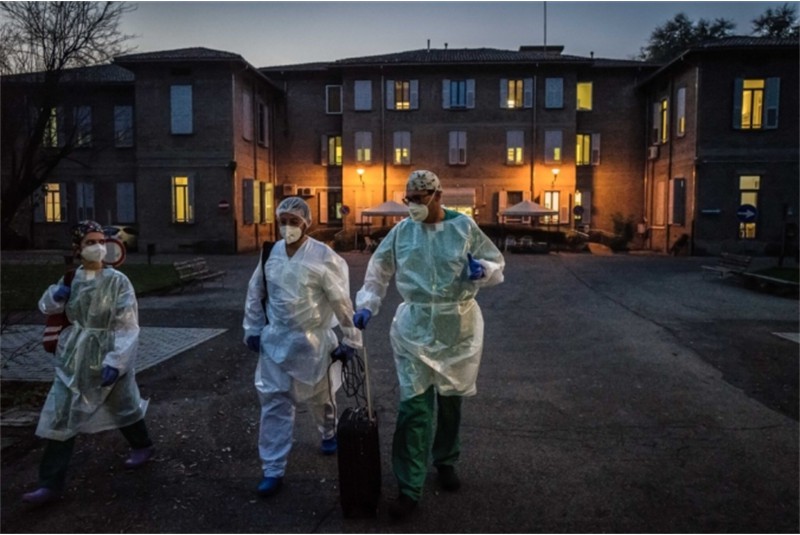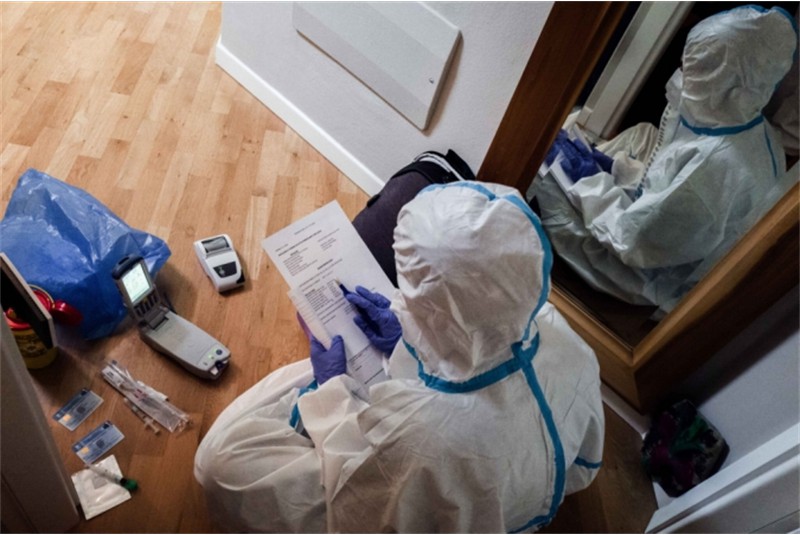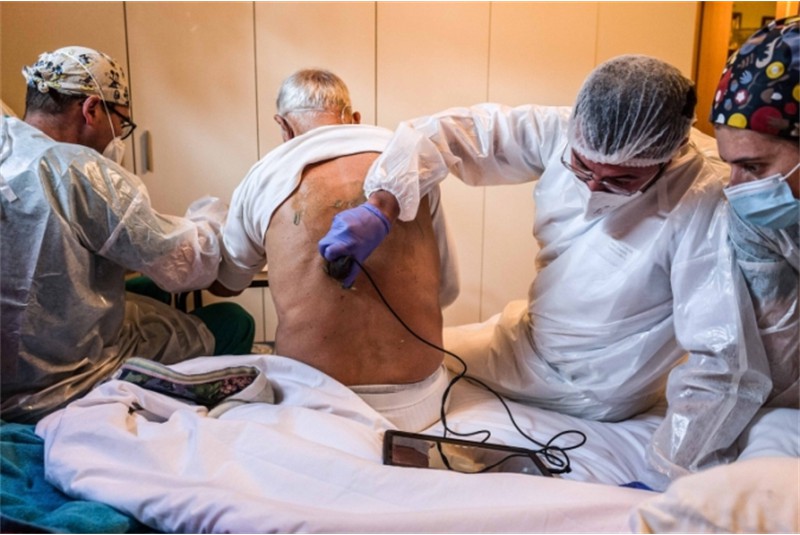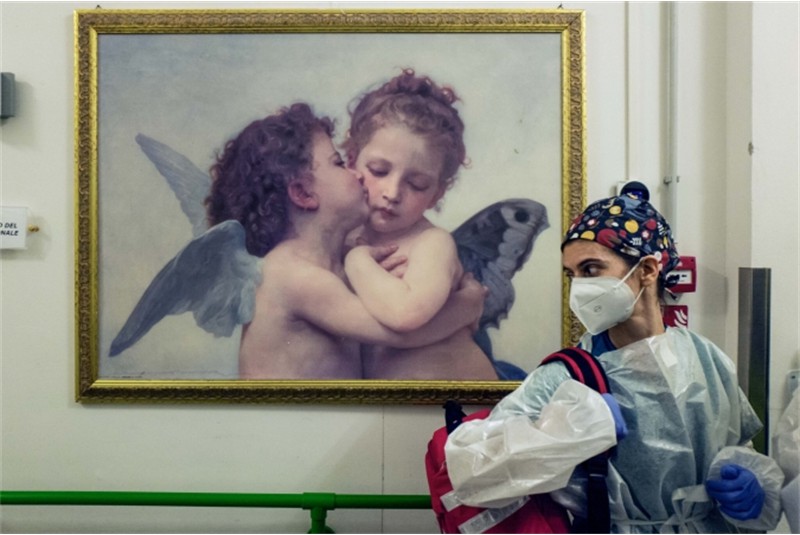



In
industrialized countries, the epidemiological changes, the improvement
of technologies and therapeutic and prevention strategies have led to
an ever-increasing number of frail and multimorbid patients, often
elderly and with multiple medical and social problems. These patients
show a high need for care and present significant connotations of
complexity as they suffer from multiple chronic diseases, stable or
unstable. They take significant polypharmacy, are dependent on common
life activities, live in residential facilities or alone, often with
distant family members, cared for by strangers or foreign caregivers
with poor empathic relationships also due to a language barrier. The
scientific literature is progressively defining this new
“biotype” (Realdi et al, Intern Emerg Med, 2011) whose
clinical complexity and the absence of specific intra-hospital pathways
can make these patients at high risk of becoming
“bed-blockers”.
Furthermore, the lack of specific territorial facilities-hospital
pathways and often the frailty and lack of homogeneity of the local
healthcare network expose this particular category of patients to a
risk of improper hospitalization, longer hospital stays, inadequate
care settings and further worsening of disability with other poor
outcomes, including death (Buurman, Plos One, 2012).
Despite the strong component of frail, multimorbid, often elderly
patients in the Emergency Departments , these latter are not always
adequate to meet the needs of that type of patient. Generally, in fact,
ED are designed and organized primarily to assist people with acute
pathologies or serious injuries and not multimorbid patients with
functional and cognitive impairments. In fact, the priority in the ED
is placed on the speed of triage, which does not allow an accurate
evaluation of subjects with multiple comorbidities, with polypharmacy,
with cognitive disorders and chronic or slow-onset pathologies.
From this perspective, and if we add the reduction in hospital beds in
recent years, the cultural and management change that is required to
the General Medicine and Emergency system become clear: if once the
principle was “admit to work”, today we have to deal with
an opposite principle: “work to (do not) admit”.
From a social point of view, these changes have reverberated in two
clearly identifiable socio-anthropological phenomena: on the one hand,
the growth of forms of neo-institutionalization and, on the other, the
increase in the phenomena of isolation-abandonment of people and
community disintegration. This is evident both in the increase in
demand for residential hospitalization places and in growing demands
not only for care but also for custody and even containment. On the
other hand, we note phenomena such as the birth rate decline,
disinvestment in young people, social abandonment, poverty,
fragmentation and degradation of the environment. These trends are very
dangerous for both people and communities due to the growing resources
needed and to the quality of interventions that can be achieved.
In this context, international literature first, and then legislators,
identified the need to identify the person’s home as the first
place of care and life, connected with the community, services and all
sociality. Living in safety, harmony and beauty by enhancing the
person, the family, the informal network, with a view to community
welfare, allows us to prevent abandonment, isolation and loneliness
which represent “per se” risk factors for health. The
person’s home must be connected with the Community Home through
some Community and Proximity Services. These facilities have to be
developed also through an institutional “alliance” between
public Institutions, private Stakeholders, “Third Sector”
Associations and the participation of volunteers. The initiative and
proximity medicine is able to bring multiple social and health
interventions to homes, even up to home hospitalization as happens in
Parma with the Multidisciplinary Mobile Units and with other projects
also through the use of new technologies. At the same time, for
diagnostic, therapeutic and healthcare pathways, the person must be
connected with the district, Rural hospital, Territorial facilities and
University Hospital in order to ensure maximum competence. It has now
been demonstrated that an improvement in home care reduces the use of
hospital care for the elderly, disabled and mentally ill.
The Italian Ministerial Decree 77/2022 for the reorganization of
territorial healthcare activities, has, among its guiding principles, a
strong push towards home care and territorial medicine. In fact, the
spirit of the legislator was to modify the classic paradigm by moving
from the concept of “Healthcare” to the concept of
“(protection of) Health/wellbeing” in its broadest sense.
From this perspective, the traditional functions of control, planning
and provision of services of healthcare companies have been enriched by
proactive, monitoring and management functions, particularly on the
social and healthcare side.
Therefore, the design/construction of Community Houses becomes
particularly challenging because it requires that the Architect have a
multidisciplinary vision of his action which include
urban-environmental aspects, urban regeneration. sustainability,
architectural composition, aesthetics, biomedical engineering and the
social function. And this is even more difficult in the territories
where the Community Houses must be created through the transformation
of the Health Houses which, essentially, had been conceived with an
eminently healthcare connotation, with architectural-functional
stylistic features similar to a small hospital or a large clinic. In
other words, the required architectural challenge is to build the
Community House as a place that contains both highly qualified
healthcare functions and social functions of proximity, training and
community. The Community House is almost a sort of “third
millennium agorà”, a place that is experienced in everyday
life by the neighborhood, populated by citizens, families, volunteers
and professionals from both the social and healthcare sectors.
The Municipality of Parma, to face and overcome these challenges,
leading and not undergoing the changes, has decided to engage and
reconnect its local community of reference, calling them to sign the
“Social Pact for Parma”.
The Social Pact for Parma is an “open” operational document
that will be progressively implemented and enriched by new ideas,
projects and interlocutors in the coming years. Annual monitoring and
qualitative-quantitative evaluation activities will be carried out on
the outcomes and objectives achieved. The Social Pact is coordinated by
a Control Room, a joint body for the governance of the process of
analysis and proposal for revision of existing paths and practices with
the aim of facilitating project participation and the implementation of
co-programming and co- designs. The Control Room, chaired by the
Councilor for Social Policies, is made up of representatives of the top
management of University Hospital and territorial healthcare companies,
the municipality, the third sector, social cooperation, trade union
organizations and other components depending on the needs and projects.
In conclusion, the ultimate objective of the Community Houses is to
contribute to strengthening a socio-health pact that avoids anomie and
the privatization of suffering, through processes of reception,
inclusion, prevention and care that give meaning and value to the
person, to the time and to the relationships. It is necessary to
integrate the “cure/treatments” centered on the medical,
psychological and social components underlying the diseases, and the
“care”, the “taking care”, of the suffering,
the subjectivity and the needs of the person and his family, always
included in the community.
The architectural declination of these principles and actions will be
the challenge of the coming years and it will require a process of
cultural change that must be improved and must involve many actors:
researchers, healthcare professionals, social workers, universities,
administrators and politics.
Bibliografia
REALDI G, Giannini S, Fioretto P, Fabris F, Vettore G, Tosato F. (2011) – “Diagnostic pathways of the complex patients: rapid intensive observation in an Acute Medical Unit” In InternEmerg Med. Oct;6 Suppl 1:85-92.